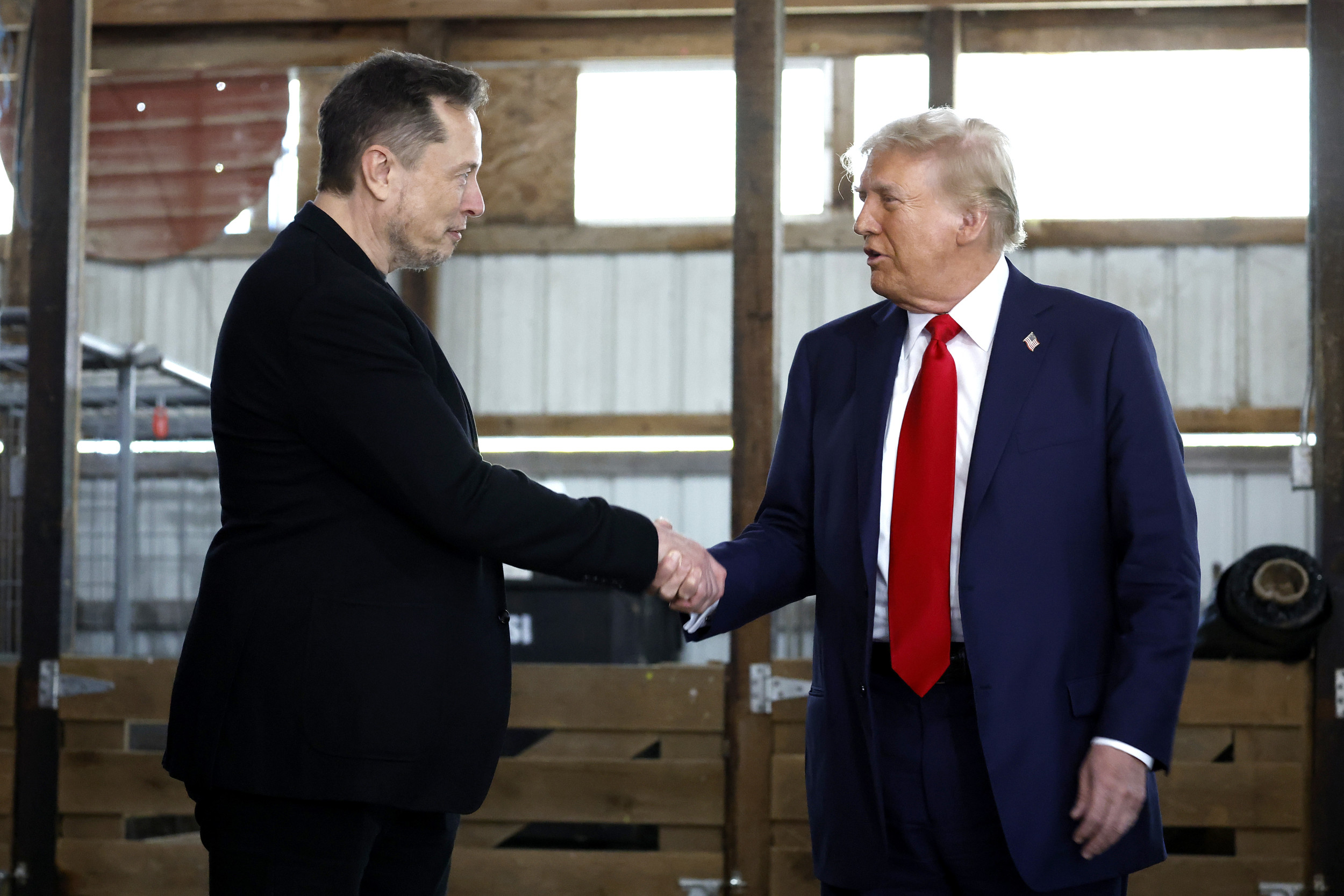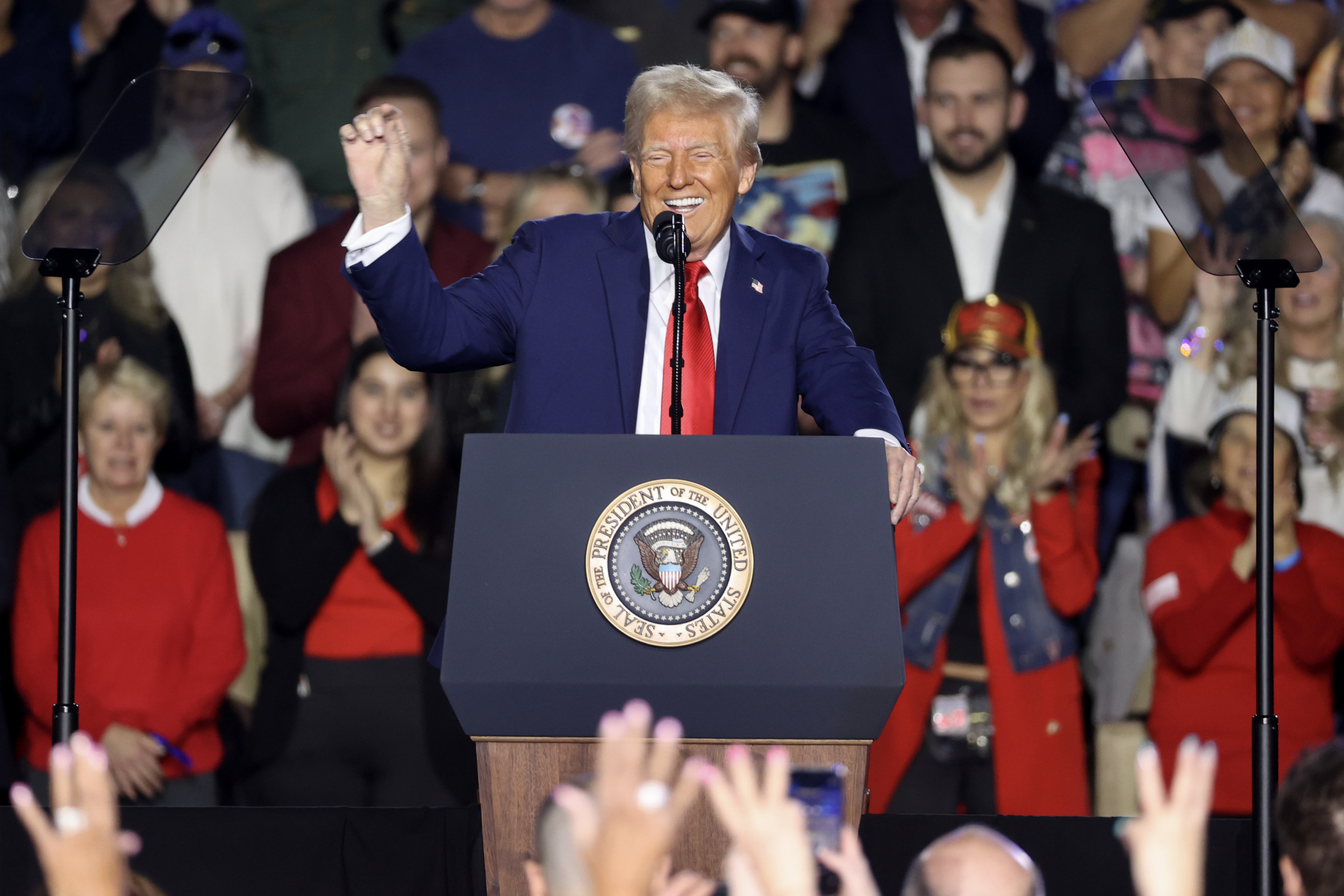Five presidents in U.S. history have won the presidency without winning the popular vote, and the most recent to do so was Donald Trump in 2016. His opponent that year, Hillary Clinton, won over 2.8 million more votes than Trump nationwide, but she lost enough key states to be defeated in the Electoral College, 306 to 232.
Trump lost both the popular vote and the Electoral College to Joe Biden in 2020. (Once again the electoral vote was 306 to 232, but this time in the Democrat’s favor.) Trump is the GOP nominee again in the 2024 presidential election, in what’s shaped up to be a tight race against Vice President Kamala Harris.
Since its founding, the nation has used the Electoral College to elect the president. Read on to learn more about how it works, its history and what role individual voters play in the outcome of the presidential election.
What is the Electoral College and how does it work?
The Electoral College is the process by which Americans elect their president and vice president indirectly through their state’s electors. Candidates must secure 270 electoral votes, a majority of the 538 at stake, in order to win the White House.
Before the general election, states select slates of electors. After voters cast their ballots in November, the candidate who wins the popular vote determines which slate of electors — Republican, Democrat or a third party — will cast electoral votes in the Electoral College for the president.
In most states, it’s winner-take-all — whoever gets the most votes in the state wins all of its electoral votes.
In Maine and Nebraska, the rules are slightly different. They have a proportional representation system in which the winner of each congressional district is awarded one electoral vote, and the winner of the statewide vote is awarded each state’s remaining two electoral votes. Some Republicans were hoping to change Nebraska’s rules to a winner-take-all model, since one of its electoral votes often goes to the Democrat, but the effort fell short.
Electors meet in their respective states in mid-December to cast their votes for the president. The meeting takes place the first Tuesday after the second Wednesday in December, which falls on Dec. 17 this year.
There is no Constitutional provision or federal law that requires electors to vote for the candidate to whom they are pledged, though they almost always do. “Faithless electors” are rare, since the electors are selected by the parties.
How many electors are in the Electoral College?
There are 538 electors in total across the 50 states and Washington, D.C.
What determines how many electoral votes a state gets?
Each state is allocated electors based on the size of its congressional delegation. Several states with the smallest populations — Alaska, Delaware, North Dakota, South Dakota, Vermont and Wyoming — have three electors each, since they have one representative in the House and two senators, while California, the largest, has 54 electoral votes. Washington, D.C., is also allocated three electors.
States may gain or lose electors as the population shifts, and there have been a number of changes since the 2020 presidential election.
In the redistricting that followed the 2020 Census, Texas gained two electoral votes and five states gained one each, while seven states lost one electoral vote.

Who chooses the electors?
The electors are chosen before the general election by their respective political party. Their sole purpose is to meet in their state following the November election and cast two votes — one for the president and one for the vice president.
Who are the electors?
Each party’s slate of electors may include state and local elected officials, party leaders, community activists and others affiliated with the party. They are typically chosen “to recognize their service and dedication to that political party,” the National Archives explains.
There are no major qualifications, but members of Congress and certain other office-holders are barred from participating, along with anyone who has engaged in insurrection or rebellion.
What happens if there’s a tie in the Electoral College?
In the rare event that there’s a tie in the Electoral College — which in the modern era would mean each candidate wins 269 electoral votes — members of the newly elected House of Representatives would decide the outcome of the presidential election, while the Senate would select the vice president.
This type of contingent election would also take place if neither candidate wins a majority. This could occur if a third-party candidate wins some of the electoral votes or if there are a number of “faithless electors” who break their pledge and vote for a candidate other than the one who won the state’s popular vote.
If it went to the House, each state would get a single vote, regardless of the size of its congressional delegation, and the 50 House delegations (the District of Columbia would not participate) would select one of the top three presidential candidates.
The vice president would be selected by a simple majority in the Senate, and all senators would have a vote. As a result, it’s possible that the president and vice president could be from different parties.
Since the 12th Amendment was ratified in 1804, there have been contingent elections twice.
In 1824, four presidential candidates split the vote, and no candidate won an electoral majority. John Quincy Adams won the election in the House, even though Andrew Jackson had won a plurality of the popular and electoral votes.
And in 1837, Martin Van Buren won a majority of electoral votes, but Virginia’s 23 electors refused to support his vice presidential candidate, Richard Johnson, and became faithless electors. That left Johnson one vote short, leading to a contingent election in the Senate, which he won easily.
Why do we vote if the Electoral College picks the president?
Five presidents in U.S. history have lost the popular vote and still managed to win the election, leading some to wonder why the nation continues to keep the Electoral College in place. The Electoral College was established in Article II of the Constitution and could be repealed by constitutional amendment. But that’s a difficult road. Amendments require a two-thirds majority vote in both houses of Congress and ratification by three-fourths of the states, or 38 of the current 50.
In a 2023 Pew Research poll, 65% of Americans said the president should be elected through the popular vote, not the Electoral College. Hundreds of proposals have been introduced in Congress to change the process over the years. There’s also a multi-state effort called the National Popular Vote Interstate Compact, which has been adopted by 17 states and Washington, D,C. That proposal would ensure that the winner of the popular vote gets all of the electoral votes in the states that signed the compact — but it would only go into effect if enough states agree.
So why keep the Electoral College in place if there’s so much frustration from Americans? According to the National Archives, the Founding Fathers saw the Electoral College as a middle ground between giving the decision to Congress or to a direct vote by citizens. Proponents say it keeps less populous states from being underrepresented by discouraging candidates from campaigning disproportionately in urban centers that are more heavily populated.
What’s the history of the Electoral College?
The Founding Fathers established the Electoral College in the Constitution in 1787. The term “Electoral College” does not appear in the nation’s historic document, but the word “electors” does, the National Archives noted.
The ratification of the 12th Amendment in 1804 changed some of the rules for the Electoral College. For example, it required separate electoral votes be cast for the president and vice president. With the ratification of the 23rd Amendment in 1961, the District of Columbia received three electors.













